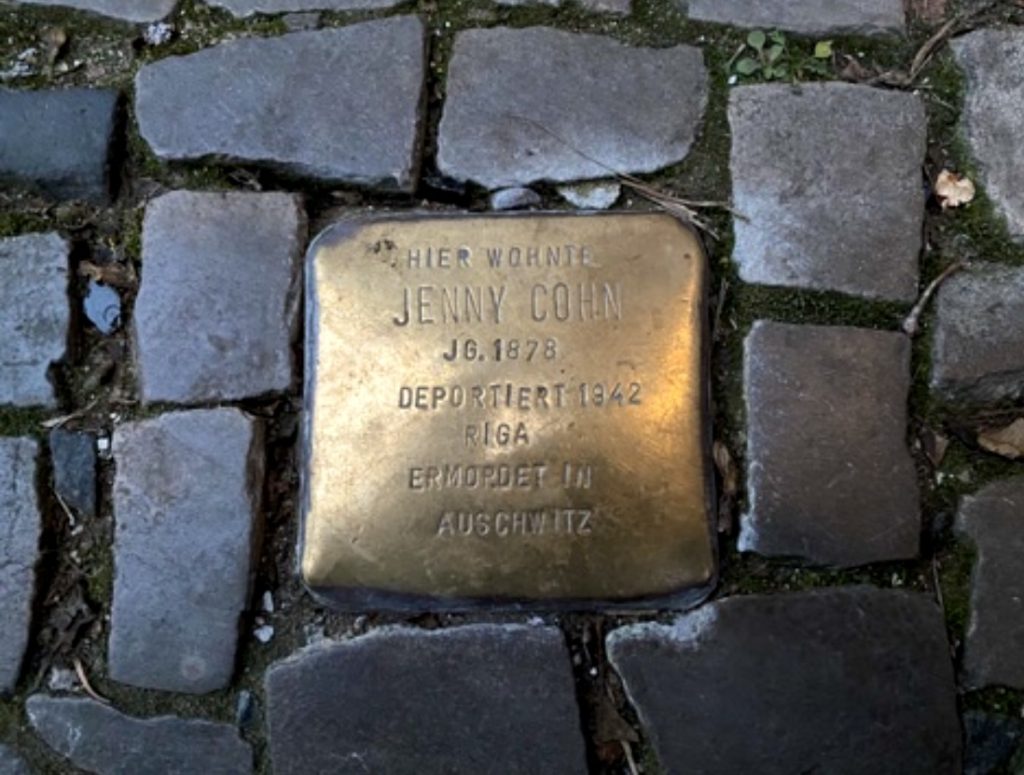
As I stepped into the elevator and I was surprised when somebody I didn’t know asked me who Hauenstein is.
„Tony Hauenstein is very old, but he looks like he’s 45. He lives in Berlin where he’s hiding in plain sight. The city’s also home to the genetic researcher Dr. Brian Peacock, who’s 45, but is dying of accelerated aging. He will stop at nothing to get his hands on exceptional DNA like Hauenstein’s, both to save himself and create the Ultimate Product: more life.“
I just got to Berlin and the city stirred me like it has every time I came here since starting work on the scripts for the streaming series Hauenstein back in September 2020. I took the photograph above outside my Berlin front door almost four years ago at the beginning of this process. It reminds me of where this story comes from: the sidewalks of the city.
My very first trip to Berlin was in July 1990 and I couldn’t get enough of the city, as if it had been waiting to seduce me and was not going to give up until it had taken me whole. It was during those trips that I started feeling as if the sidewalks were whispering to me. Could they play back to my imagination the things that had happened on them long ago?
When buildings are destroyed, as untold thousands were in Berlin during World War II, this doesn’t automatically mean that the sidewalks are also destroyed. Of course, much else in Berlin was destroyed during World War II, most importantly the greater part of the city’s Jewish population, who were murdered in Auschwitz, other death camps or even on the city’s streets. Very few of those who had not fled Germany by the time the war began survived it.
Many of them are now memorized by Stolpersteine, or tripping stones*, like the one pictured above. It may be a tiny and very belated victory over genocidal hatred, but through the Stolpersteine the victims commemorated have won back a small amount of ground, and with it some part of their identity. So sidewalks really can have memories.
Of course, my source inspiration goes beyond this. Hazy experiences in odd locations lead me to delve deep into the city’s history, and it was this process that nourished Hauenstein’s development even before I knew who he was. Without years of this serendipitous deep immersion in Berlin I wouldn’t have been so receptive when the filmmaker Thomas Struck told me about Hauenstein back in 1999.
The timing couldn’t have been better, because I had been thinking about the coming turn of the 20th to 21st centuries since I was a small child. What had long seemed distant in time was suddenly right in front of me; what had been a metaphysical location for my dreams was rapidly becoming very concrete. During the intervening time I had not only moved to Berlin from London (via the Mosel Valley), but also reinvented myself as a wine journalist. My father had also died, and I had loved and lost several times. This meant that I’d already had some of experience of Hauenstein’s central themes.
The details of Hauenstein’s identity were filled in by my day-today and night-to-night nitty-gritty experience of Berlin’s streets and manifold interior spaces. And from the suggestive interplay of light and shadows while walking the city’s streets and moving about its rooms Tony’s friends and enemies emerged. So, regardless whether the result is good or bad, it is a Berlin story through and through. And this although its themes are universal.
If back in the 1990s you had told me that one day I would write a complex story about love and death, fear and longing I would have laughed at you. My first attempt to write Hauenstein’s story was a failure not only because I was unaware of the basics of scriptwriting, but also because I was not up to handing the kind of material that is the core of Ancient Greek tragedy and much other classical drama.
So two developmental processes – acquiring a sound knowledge of scriptwriting and a deep exploration of these themes – were necessary before I could put together the three scripts that now stand more or less complete. And it is reaching this decisive point, more than my train journey from Eppstein in the Taunus mountains to Berlin, that triggered today’s reflections.
For those who can’t read German the Stolperstein above says:
Here lived
JENNY COHN
Born 1878
Deported 1942 to
Riga
Murdered in
Auschwitz
*For more information about the Stolpersteine, or tripping stones go to:
